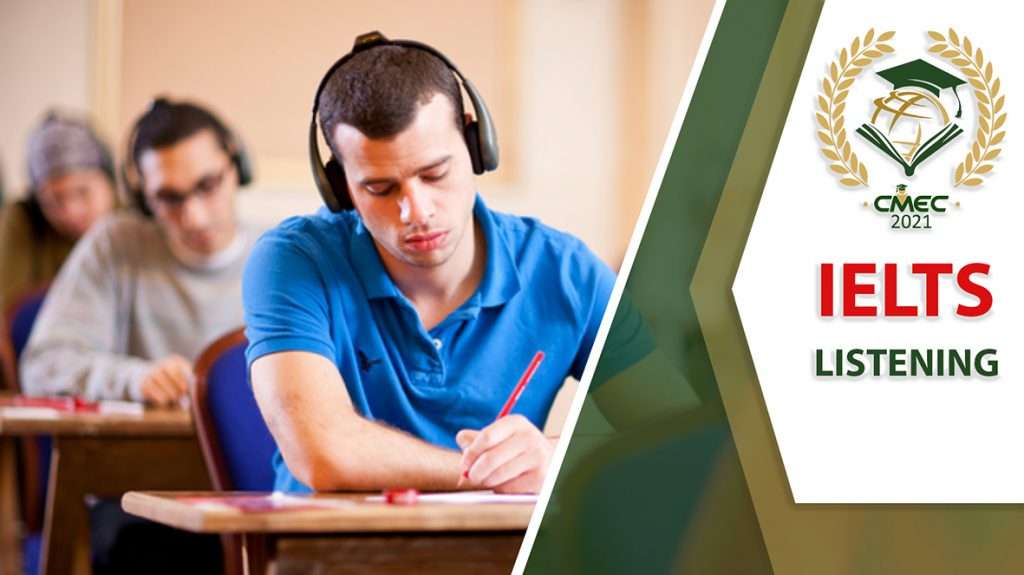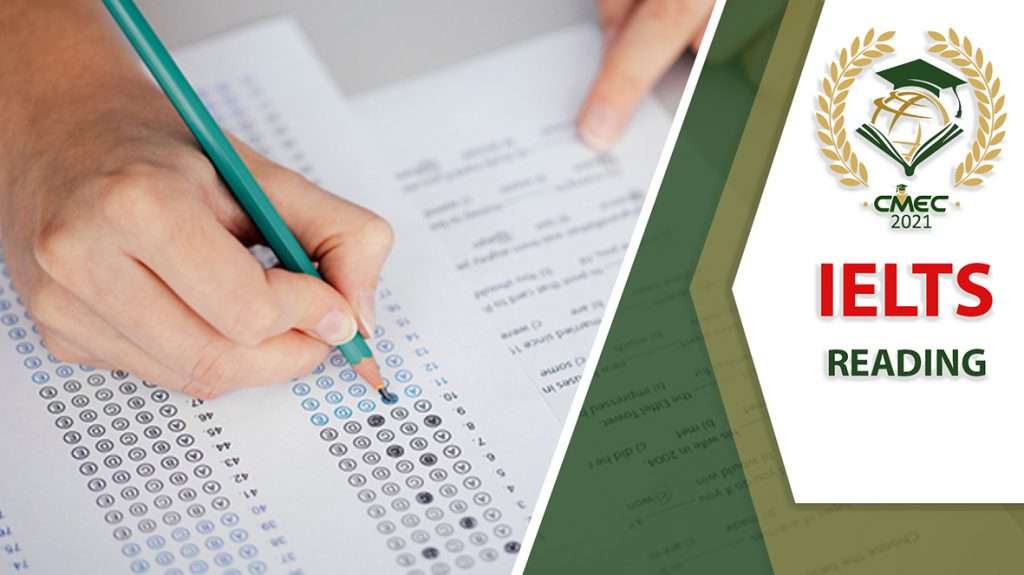IELTS Preparation Program
IELTS Overview
The International English Language Testing System (IELTS) is designed to help you work, study or migrate to a country where English is the native language. Your ability to listen, read, write and speak in English will be assessed during the test. The IELTS exam is scored according to a 9 Band scale. You will get a score for each section. The average of these 4 marks is your Overall Band Score. IELTS is jointly owned by the British Council, IDP: IELTS Australia, and Cambridge Assessment English.
There are two types of IELTS tests:
- IELTS General Training: The IELTS General Training is designed for individuals who wish to migrate to an English-speaking country, like Australia, Canada, New Zealand, the UK, and the USA. The test can also be taken if the level of study is less than a degree. This includes English-speaking schools or colleges. Everyday language skills used in social and workplace environments are evaluated through the IELTS General Training.
- IELTS Academic: The IELTS Academic test is suitable for those wanting to study in an English-speaking environment or university (higher education). You can also take IELTS Academic for professional registration purposes.
IELTS Test Format
Both types of the IELTS test (Academic and General Training) consist of four sections: speaking, listening, reading, and writing. You will always take the listening, reading, and writing parts all on the same day, one after the other, with no breaks between them. Your speaking test is usually scheduled on the afternoon of the test day; however, it can be scheduled within seven days before or after that. You will be contacted by your local IELTS test center to inform you of the date and location of your speaking test.
Syllabus of IELTS General Training
Listening (30 minutes):
You will listen to four recordings of native English speakers and then write your answers to a series of questions.
- Recording 1 – a conversation between two people set in an everyday social context.
- Recording 2 – a monologue set in an everyday social context, e.g. a speech about local facilities.
- Recording 3 – a conversation between up to four people set in an educational or training context, e.g. a university tutor and a student discussing an assignment.
- Recording 4 – a monologue on an academic subject, e.g. a university lecture.

Assessors will be looking for evidence of your ability to understand the main ideas and detailed factual information, the opinions and attitudes of speakers, the purpose of an utterance, and evidence of your ability to follow the development of ideas.
The first two parts deal with situations set in everyday social contexts. In Part 1, there is a conversation between two speakers (for example, a conversation about travel arrangements), and in Part 2, there is a monologue in (for example, a speech about local facilities). The final two parts deal with situations set in educational and training contexts. In Part 3, there is a conversation between two main speakers (for example, two university students in discussion, perhaps guided by a tutor), and in Part 4, there is a monologue on an academic subject.
The recordings are heard only once. They include a range of accents, including British, Australian, New Zealand, American and Canadian.
Number of questions: 40
Timing: Approximately 30 minutes (plus 10 minutes transfer time).
Task types: A variety of question types are used, chosen from the following: multiple choice, matching, plan/map/diagram labeling, form/note/table/flow-chart/summary completion, sentence completion.
Answering: Test takers write their answers on the question paper as they listen and at the end of the test are given 10 minutes to transfer their answers to an answer sheet. Care should be taken when writing answers on the answer sheet as poor spelling and grammar are penalized.
Marks: Each question is worth 1 mark.
Reading (60 minutes):
The Reading section consists of 40 questions, designed to test a wide range of reading skills. These include reading for gist, reading for main ideas, reading for detail, skimming, understanding logical argument, and recognizing writers’ opinions, attitudes and purpose.
IELTS General Training test – this includes extracts from books, magazines, newspapers, notices, advertisements, company handbooks, and guidelines. These are materials you are likely to encounter on a daily basis in an English-speaking environment.

Number of questions: 40
Timing: 60 minutes
Task types: A variety of question types are used, chosen from the following: multiple choice, identifying information, identifying writer’s views/claims, matching information, matching headings, matching features, matching sentence endings, sentence completion, summary completion, note completion, table completion, flow-chart completion, diagram label completion, short-answer questions.
Sources: The first section, ‘social survival’, contains texts relevant to basic linguistic survival in English with tasks mainly about retrieving and providing general factual information, for example, notices, advertisements, and timetables.
The second section, ‘Workplace survival’, focuses on the workplace context, for example, job descriptions, contracts, and staff development and training materials.
The third section, ‘general reading’, involves reading more extended prose with a more complex structure. Here, the emphasis is on descriptive and instructive rather than argumentative texts, in a general context relevant to the wide range of test-takers involved, for example, newspapers, magazines, and fictional and non-fictional book extracts.
Answering: Test takers are required to transfer their answers to an answer sheet during the time allowed for the test. No extra time is allowed for transfer. Care should be taken when writing answers on the answer sheet as poor spelling and grammar are penalized.
Marks: Each question is worth 1 mark.
Writing (60 minutes):
Topics are of general interest. There are two tasks:
- Task 1 – you will be presented with a situation and asked to write a letter requesting information, or explaining the situation. The letter may be personal, semi-formal, or formal in style.
- Task 2 – you will be asked to write an essay in response to a point of view, argument, or problem. The essay can be fairly personal in style.
Number of questions: 2

Timing: 60 minutes
Task types: In Task 1, test takers are asked to respond to a situation, for example, by writing a letter requesting information or explaining a situation. In Task 2, test takers write an essay in response to a point of view, argument or problem.
Answering: Answers must be written in full in the answer booklet. Notes or bullet points in whole or in part are not acceptable as answers. Test takers may write on the question paper, but this cannot be taken from the test room and will not be seen by the examiner.
A detailed look at the paper with links to related resources.
Task 1
Task type and format: In Writing Task 1, test takers are presented with a situation and required to write a personal response in the form of an informal, semi-formal, or formal letter of at least 150 words in the answer booklet provided. The situations they are asked to write about are common, everyday ones such as: writing to a college accommodation officer about problems with accommodation, writing to a new employer about time management problems they are having, writing to a local newspaper about a plan to develop a local airport, writing to a renting agency to sort out problems with the heating system in their house.
Test takers are told what kind of information (in the form of three bullet points) they must include in their response. They may be required to request or give information and/or explain a situation. To do this, they may need to do some of the following: ask for and/or provide general factual information, express needs, wants, likes, or dislikes, express opinions or complaints, make requests or make suggestions/recommendations.
The style of writing that test takers use depends on who they are asked to write to (i.e., the audience) and how well they are supposed to know them. They need to write in a style that is appropriate for their audience and that will help them to achieve their purpose for writing, e.g. writing to a friend (informal) or writing to a manager (semi-formal or formal). Test takers do not need to include any addresses at the head of their letters.
Test takers should spend no more than 20 minutes on this task. They are asked to write at least 150 words and will be penalized if their answer is too short. While test-takers will not be penalized for writing more than 150 words, they should remember that a longer Task 1 answer may mean that they have less time to spend on Task 2, which contributes twice as much to the Writing band score.
Test takers should also note that they will be penalized for irrelevance if the response is off-topic or is not written as full, connected text (e.g. using bullet points in any part of the response, or note form, etc.). They will be severely penalized for plagiarism (i.e., copying from another source).
Task focus: This task assesses the ability to follow English letter-writing conventions (i.e., what order to put information in, what style to use, how to start and finish a letter), to use language accurately and appropriately, and to organize and link information coherently and cohesively.
Number of questions: 1
Task 2
Task type and format: In Writing Task 2, test takers write a semi-formal/neutral discursive essay of at least 250 words in the answer book provided.
The task instructions give information about a point of view, argument, or problem. They then tell test-takers how to discuss this, which may involve providing general factual information, outlining and/or presenting a solution, justifying an opinion, evaluating evidence and ideas.
Topics are of general interest, – such as: whether children’s leisure activities should be educational, why families are not so close as they used to be and how they could be brought closer, how environmental problems can be solved, who should pay for the care of old people, whether smoking should be banned in public places.
Test takers should make sure that they complete the task carefully and provide a full and relevant response. They should organize their ideas clearly and make sure to support their argument with relevant examples (including from their own experience where relevant) or evidence. For this task, test-takers need to be able to communicate more abstract and complex ideas and use a range of vocabulary and grammatical structures. Task 2 contributes twice as much to the final Writing band score as Task 1. Therefore, test takers who fail to attempt to answer this task will greatly reduce their chance of achieving a good score.
Test takers are asked to write at least 250 words and will be penalized if their answer is too short. They should spend no more than 40 minutes on this task.
Test takers should also note that they will be penalized for irrelevance if the response is off-topic or is not written as full, connected text (e.g. using bullet points in any part of the response, or note form, etc.). They will be severely penalized for plagiarism (i.e., copying from another source).
Task focus: This task assesses the ability to follow English discursive writing conventions (i.e., what order to put information in, what style to use, how to start and finish discursive writing, how to paragraph), to organize and link information coherently and cohesively, and to use language accurately and appropriately.
Number of questions: 1
Speaking (11–14 minutes):
The speaking section assesses your use of spoken English. Every test is recorded.
- Part 1 – the examiner will ask you general questions about yourself and a range of familiar topics, such as home, family, work, studies and interests. This part lasts between four and five minutes.
- Part 2 – you will be given a card which asks you to talk about a particular topic. You will have one minute to prepare before speaking for up to two minutes. The examiner will then ask one or two questions on the same topic.
- Part 3 – you will be asked further questions about the topic in Part 2. These will give you the opportunity to discuss more abstract ideas and issues. This part of the test lasts between four and five minutes.

Task types: There are three parts to the test and each part fulfills a specific function in terms of interaction pattern, task input, and test-takers output.
Part 1 – Introduction and interview
Task type and format: In this part, the examiner introduces him/herself and checks the test takers’ identity. They then ask the test takers general questions on some familiar topics such as home, family, work, studies, and interests. To ensure consistency, questions are taken from a script. Part 1 lasts for 4–5 minutes.
Task focus: This part of the test focuses on the ability to communicate opinions and information on everyday topics and common experiences or situations by answering a range of questions.
Number of questions: Variable
Part 2 – Long turn
Task type and format: Part 2 is the individual long turn. The examiner gives the test takers a task card that asks the test takers to talk about a particular topic, includes points to cover in their talk, and instructs the test takers to explain one aspect of the topic. Test takers are given one minute to prepare their talk and are given a pencil and paper to make notes. The examiner asks the test takers to talk for 1 to 2 minutes, stops the test takers after 2 minutes, and asks one or two questions on the same topic.
Using the points on the task card effectively, and making notes during the preparation time, will help the test takers think of appropriate things to say, structure their talk, and keep talking for 2 minutes. Part 2 lasts 3–4 minutes, including the preparation time.
Task focus: This part of the test focuses on the ability to speak at length on a given topic (without further prompts from the examiner), using appropriate language, and organizing ideas coherently. It is likely that the test-takers will need to draw on their own experience to complete the long turn.
Number of questions: Variable
Part 3 – Discussion
Task type and format: In Part 3, the examiner and the test takers discuss issues related to the topic in Part 2 in a more general and abstract way and, where appropriate, in greater depth. Part 3 lasts 4–5 minutes.
Task focus: This part of the test focuses on the ability to express and justify opinions and to analyze, discuss and speculate about issues.
Number of questions: Variable
Syllabus of IELTS Academic
As per the IELTS syllabus 2021, the listening, writing task 2, and speaking sections are the same as explained above in the General section of IELTS. The differences are in writing task 1 and the reading module as discussed below:
- Writing Task 1 Section: In Writing Task 1, test takers may be asked to describe facts or figures presented in one or more graphs, charts, or tables on a related topic; or they may be given a diagram of a machine, a device, or a process and asked to explain how it works. They should write in an academic or semi-formal/neutral style and include the most important and the most relevant points in the diagram. Some minor points or details may be left out.Test takers should spend no more than 20 minutes on this task. They are asked to write at least 150 words and will be penalized if their answer is too short. While test-takers will not be penalized for writing more than 150 words, they should remember that a longer Task 1 answer may mean that they have less time to spend on Task 2, which contributes twice as much to the Writing band score.
Test takers should also note that they will be penalized for irrelevance if the response is off-topic or is not written as full, connected text (e.g. using bullet points in any part of the response, or note form, etc.). They will be severely penalized for plagiarism (i.e. copying from another source).
Test takers must write their answers on the answer booklet.
Task focus: This task assesses the ability to identify the most important and relevant information and trends in a graph, chart, table or diagram, and to give a well-organized overview of it using language accurately in an academic style.
Number of questions: 1
Reading Section: Three reading passages with a variety of questions using a number of task types.
Number of questions: 40
Timing: 60 minutes
Task types: A variety of question types are used, chosen from the following; multiple-choice, identifying information, identifying the writer’s views/claims, matching information, matching headings, matching features, matching sentence endings, sentence completion, summary completion, note completion, table completion, flow-chart completion, diagram label completion and short-answer questions.
Sources: Texts are taken from books, journals, magazines, and newspapers, and have been written for a non-specialist audience. All the topics are of general interest. They deal with issues that are interesting, recognizably appropriate, and accessible to test takers entering undergraduate or postgraduate courses or seeking professional registration. The passages may be written in a variety of styles, for example, narrative, descriptive, or discursive/argumentative. At least one text contains a detailed logical argument. Texts may contain non-verbal materials such as diagrams, graphs, or illustrations. If texts contain technical terms a simple glossary is provided.
Answering: Test takers are required to transfer their answers to an answer sheet during the time allowed for the test. No extra time is allowed for transfer. Care should be taken when writing answers on the answer sheet as poor spelling and grammar are penalized.
Marks: Each question is worth 1 mark.
CMEC IELTS Preparation
CMEC offers both Academic and General Training IELTS Preparation Program for students who wish to prepare for an internationally recognized IELTS Test. The lessons cover both examination skills and techniques and work on improving all aspects of the students’ English: speaking, listening, reading, writing, grammar, pronunciation, and vocabulary. The IELTS Exam Preparation course is typically combined with General English classes.






